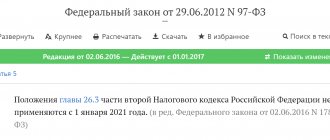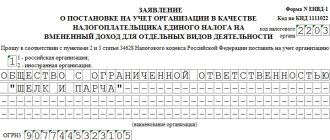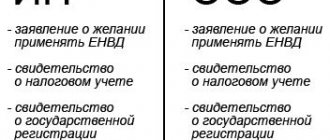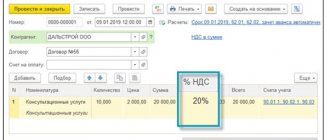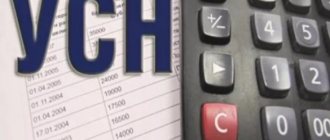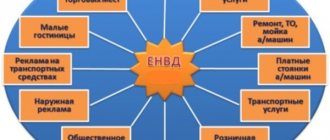Situations when individual entrepreneurs and organizations decide to switch from one tax regime to another are not so rare. As a rule, the reason for the transition is the desire to optimize tax payments, sometimes the inability to use a particular tax system due to a violation of the conditions for its application. One way or another, sometimes there is a need to urgently, without waiting for the new year, switch to a different tax regime, including quite often - from OSNO and “simplified tax” to UTII.
UTII: briefly about the features
A single tax on imputed income implies that the tax here is paid not on any specific income already received, but on future expected profits. Moreover, the tax can be applied only for certain types of activities that are prescribed in OKUN and OKVED. Each region independently selects from the general list those areas of activity for which UTII can be used on its territory. Thus, while engaging in some work or services that fall under UTII in one administrative district, an enterprise or individual entrepreneur may not always be able to engage in them under the same conditions in another.
Application or notification
The document in which the businessman reports the choice of imputation is called an application for registration, although, by analogy with the simplified tax system, some use the term “notification of transition to UTII.” This is incorrect, so let's clarify this issue:
- an application for transition to UTII is a message that the taxpayer has begun to engage in a line of business that falls under the imputed regime.
- notification of the application of UTII is a confirmation issued by the tax office that the taxpayer has been registered for the designated type of activity.
At the same time, different forms are provided for organizations and individual entrepreneurs:
- application in form No. UTII-1 for registration of the organization;
- application in form No. UTII-2 for registration of an individual entrepreneur.
Both application forms for UTII for 2021 were approved by Order of the Federal Tax Service of Russia dated December 11, 2012 No. ММВ-7-6/ [email protected] and continue to be relevant.
It’s easy to fill out an application for UTII for 2021 - it’s a simple two-page document. The only difficulty is to indicate the code of the type of business activity. What is meant here is not the OKVED code, but the code from the annex to the UTII declaration. For example, 01- “Providing household services.
You can learn in detail how to fill out an application for UTII from the official instructions for filling out for LLCs and individual entrepreneurs.
Sample of filling out an application for UTII for an LLC
Sample of filling out an application for UTII for individual entrepreneurs
Prepare a UTII declaration for only 149 rubles
Transition to UTII within a year from different taxation systems
In general, until 2013, the use of the Single Tax was mandatory for some types of activities. Since 2013, this rule has been abolished and the transition to “imputation” has become a purely voluntary matter. At the same time, individual entrepreneurs and organizations can switch to UTII both from the beginning of the new calendar year and (not always, depending on the circumstances) at any other time. It is important to observe only one basic condition, namely, to make sure that the use of UTII in a particular area of activity is possible in the territory where the organization or individual entrepreneur operates.
Patent instead of UTII
Individual entrepreneurs, in addition to “simplified”, OSN and NPD, have the opportunity to choose a patent. At the same time, the law does not provide for the possibility of applying an LLC patent.
Some features should be taken into account when switching to this special mode.
Make sure to apply for a patent before a certain date
According to the general rules, in order to start using a patent from next year instead of UTII, it is important to have time to submit an application for switching to a patent to the Federal Tax Service 10 working days before the start of its application. To do this, you need to use form 26.5-1.
Based on these requirements, in order to apply the patent from January 1, 2021, it was necessary to submit an application no later than December 17. However, the Federal Tax Service took into account the circumstances and decided to extend the deadline for filing the application to ensure a “seamless” transition. The service reported this in Letter dated December 9, 2020 No. SD-4-3/ [email protected]
Now it is important to have time to submit an application for transfer to a patent before December 31, 2021 .
Submit an application with current changes for free via Extern
What is important to consider:
- The announced extension of the deadline for filing a patent application is temporary.
- If the application is sent by mail, then the day it is submitted is the date the postal item was sent.
- If the application is transmitted via telecommunication channels, including through a personal account on the Federal Tax Service website, then the day it is submitted is the date it was sent.
We previously wrote about how to apply for a patent through Kontur.Extern.
Patent in 2021: new types of activities, tax deduction and transition from UTII
Remember that a patent is acquired within a calendar year
Moreover, it is purchased for any number of days, but not less than a month. An individual entrepreneur can choose a period from 1 to 12 months inclusive within the calendar year (clause 5 of Article 346.45 of the Tax Code of the Russian Federation).
Detailed explanations about the period of application of a patent are given in Letter No. SD-4-3/3560 of the Federal Tax Service of the Russian Federation dated 03/02/2020.
Having received an application for a patent, the tax authority must issue or send a patent to the individual entrepreneur within five working days.
From OSNO to “imputation”: transition in the middle of the year
The transition to the Single Tax with OSNO does not require any special efforts from those wishing to do so - it is enough to just submit a corresponding application to the local tax service. True, it must be submitted no later than five days from the beginning of the provision of services or performance of work falling under the “imputation”. This can be done at any time during the year - the legislation does not provide for any restrictions here.
Since the UTII reporting period is a quarter, the tax on imputed income will need to be paid for the first time based on the results of those three quarterly months during which the company switched to UTII.
Important! When switching to UTII from the general regime in the middle of the year, the tax base must be taken into account based on the actual duration of work in the month when the organization or individual entrepreneur was registered with the tax service as a payer of “imputation”.
When switching from the general mode to the “impute” mode, it is important to follow the following rules:
- carry out the procedure for restoring input VAT both on fixed assets and on all other operations. The restored VAT will have to be taken into account in the income tax (in the line “other expenses”);
- In the income tax return, it will be necessary to take into account income and expenses relating to the period when the individual entrepreneur or organization was still on OSNO. This must be done by filling out and submitting to the tax service a profit tax return for the period that preceded the transition period.
UTII and simplified tax system: similarities and differences
In practice, organizations and individual entrepreneurs are faced with the question of choosing between 2 special systems: UTII and the simplified taxation system (STS). We propose to compare these systems, highlighting the main points. For clarity, let's present the comparison in the form of a table.
Table 1
Similarities and differences between the simplified tax system and UTII
| Comparison criteria | simplified tax system | UTII |
| How does the transition happen? | Voluntarily | Voluntarily |
| Object of taxation | Income. Income minus expenses | Imputed income |
| The tax base | Variable value: income or income minus expenses. In monetary terms | Constant: the estimated value in money of imputed income, which is calculated using the formula: basic yield × physical indicator |
| Taxable period | Year | Quarter |
| Tax rate | For the “income” system – 6% For “income minus expenses” - 15% | 15%, unless a different rate is introduced by regional law within the range of 7.5–15% |
| What taxes are they exempt from? | Income tax (under the simplified tax system, a number of transactions established by special rules are still subject to income tax). Tax on property of organizations (except for taxes on land and real estate, calculated based on cadastral value). Property tax for individuals (for individual entrepreneurs). VAT. Personal income tax (only individual entrepreneurs) | |
| When can you voluntarily switch to/refuse the special regime? | From January 1 of the following year (with the exception of the transition from UTII to the simplified tax system, available already on the 1st day of the next calendar month) | From January 1 of the following reporting year |
You can find more complete information on the topic in ConsultantPlus. Free trial access to the system for 2 days.
UTII and the simplified tax system are similar in that under these regimes there is no need to keep full accounting records and several taxes are replaced by one. In addition, for these special regimes, general requirements are established for the number of employees (100 or less people) and the share of participation of the owner organizations (it must be 25% or lower).
Only the taxpayer can assess the advisability of using imputation or simplification, but based on the above characteristics, the following conclusions can be drawn:
- UTII is suitable for a business with a stable high income, so that the fixed amount of tax makes up a small share in the structure of total expenses.
- The simplified tax system is convenient for organizations whose activities depend on the season, fashion and other factors, i.e. those where income is unpredictable, unstable, and there are no periods at all, since the amount of tax depends on the amount earned.
Example of VAT recovery on fixed assets
In February, Shelkopryad LLC bought equipment worth 130 thousand rubles (including VAT 23,400 rubles). Input VAT on the purchased equipment was successfully accepted for deduction in a timely manner, and from July Shelkopryad LLC decided to switch to UTII. Accordingly, it became necessary to calculate the amount of VAT to be restored.
The residual value of the equipment, based on tax accounting data, as of June was equal to 103 thousand rubles. As a result of simple calculations, it turns out that the amount of VAT to be recovered is:
RUB 23,400 x 103 thousand rubles. : (130 thousand rubles – 23,400 rubles) = 22,609 rubles.
Transition from simplified tax system to UTII in the middle of the year
Businessmen who use the simplified tax system as their main tax regime do not have the right to switch to other taxation systems in the middle of the tax period, which for them is a year. Exceptions are those cases when the taxpayer’s income at the end of the reporting period exceeds 60 million rubles. In such situations, an automatic transition of the “simplified” to OSNO occurs immediately after the quarter in which this excess was recorded. As for UTII, in this case, taxpayers can switch to it only from the beginning of the next calendar year and nothing else.
How to switch to simplified tax system
If you can still switch to the simplified tax system, then do it from the beginning of the month in which you stopped being a UTII payer. To do this you need:
— refuse UTII within 5 working days from the date of termination of activity. Organizations submit an application for UTII-3, individual entrepreneurs - UTII-4;
- switch to the simplified tax system. Send the notice within 30 calendar days after you withdraw from UTII.
Example
On May 4, the tax office deregistered Insight LLC from the UTII register; the LLC can apply the simplified tax regime from May 1. But to do this, no later than June 3, she must notify the inspectorate about the transition to the simplified tax system.
Documents required for transition to “imputation”
To proceed to UTII, the interested party must provide the tax authorities with a number of documents.
If this is an individual entrepreneur , then you will need:
- statement of desire to apply UTII;
- passport;
- tax registration and state certificates registration as an individual entrepreneur.
To switch to UTII, the founders of an LLC
- statement of desire to apply UTII;
- tax registration and state certificates registration.
Step 4 – Completing and submitting the application
If the decision is made, then the next step is to inform the tax office about your desire to work for UTII from a certain date. The Tax Code of the Russian Federation establishes a period of five days within which a standard form application is submitted. Days are calculated in working hours and are counted from the day following the start of work at the “imputation”.
Organizations need to fill out an application for UTII-1, individual entrepreneur - UTII-2. These forms can be found in the appendices to order No. ММВ-7-6/ [email protected]
The application is submitted:
- at the location of the company (individual entrepreneur’s registration), if the activity does not have a specific address for its implementation (distribution, peddling trade, trucking);
- at the place of business for other activities. If there are many such addresses, and they are all located within one municipality, then the application is submitted to the department at one address (any); if they are all located in different municipalities, then the application is submitted to each individual entity on the territory of which the activity being transferred to the imputed mode.
Partial transition to UTII
In some cases, individual entrepreneurs or organizations combine two tax systems at once - this is legally permissible. The single tax is combined with “simplified” and OSNO, that is, part of the activities that a commercial company carries out are on one of the main taxation systems, and part (based on the types of activities) falls under “imputation”. In this case, the main rule that must be followed is to keep separate records of income and expenses. In the same way, it is necessary to use separate accounting if the taxpayer applies UTII for several types of activities at once.
How to divide common expenses
The separation of cost accounting according to UTII and the general taxation system is much more complicated than calculating revenues. The reason for this is the inability to clearly determine the nature of costs by type of activity. As a reference for clarification, you should refer to the Letter of the Ministry of Finance of the Russian Federation of 2006. It provides methods for distributing working capital in retail and wholesale trade and other nuances of maintaining a separate account.
Provisions of Art. 274 of the Tax Code of the Russian Federation allows for a proportional system of distribution of revenues received from certain types of company activities. However, the use of this method is often challenged in courts.
Along with the courts, the Ministry of Finance is also not against the use of this method. In particular, a proportional distribution of costs in relation to the quantitative expression of the occupied area is allowed. This is evidenced by a number of official documents. Entrepreneurs and accountants are advised to first confirm their methods with a representative of the local tax office.
When you can’t use UTII
At no time and under any conditions is it possible to move to “imputation” if the organization or individual entrepreneur violates the following conditions:
- the number of hired personnel exceeds 100 people;
- other legal entities and organizations have a share in the authorized capital of more than 25%;
- the enterprise is a simple partnership;
- the transition of individual entrepreneurs to the simplified tax system took place on the basis of a patent;
- the taxpayer applies a single agricultural tax.
In addition, there are a large number of restrictions on the use of UTII for businessmen directly within the field of activity. Here are some examples:
- those motor transport enterprises in which the number of transport units is above 20 are not entitled to apply UTII;
- for retail sales, the sales floor area should not exceed 150 sq.m.;
- in the advertising business, only those companies that are involved in the placement or distribution of advertising can work with imputation. The production of advertising structures, leasing of advertising space or development of services are no longer suitable for UTII;
- the use of UTII is impossible if an enterprise or individual entrepreneur works not only with individuals, but also with legal entities in the types of activities falling under the “imputation”.
This is not the entire list of such restrictions. A more detailed list can be found in the Tax Code of the Russian Federation. So, before switching to “imputation”, you must make sure that both the type of activity and its conditions do not contradict the rules for applying UTII in a particular region.
Thus, the transition to imputation in the middle of the year is possible only if the organization or individual entrepreneur applies the general tax regime. It is impossible to switch from the simplified tax system to “imputation” within a year, therefore, no matter how much you would like it, you will have to wait for the new calendar year.
Conclusion
The transition from simplified tax system to UTII without restrictions is possible only at the beginning of activity. You can also submit an application at any time if a businessman decides to combine these tax regimes. It is important not to forget to submit a “simplified” declaration at the end of the “transition” year, even if there was no revenue within the framework of this special regime.
If the business is already operating, then you can completely abandon the simplified tax system and switch to “imputation” only at the end of the year.
If a taxpayer has lost the right to use the simplified tax system and “forcibly” switched to OSNO, then he can theoretically immediately switch to UTII without waiting for the new year. But because This issue is not regulated by the Tax Code of the Russian Federation, it is better to first find out the opinion of the tax authorities in your region.

